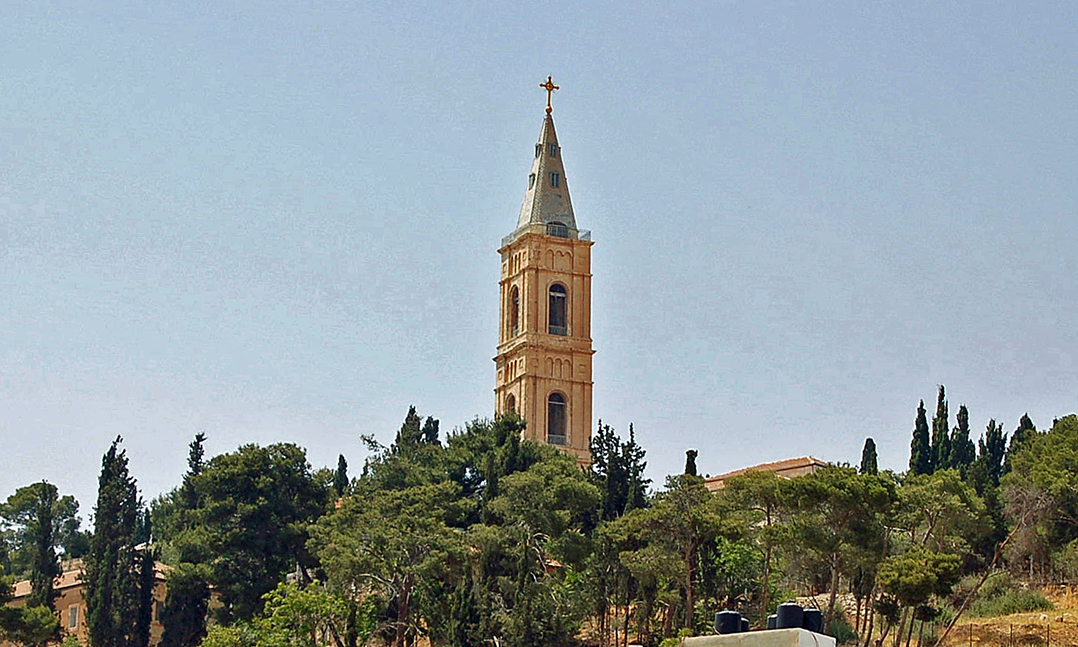Both Christians and Muslims believe that God took Jesus bodily to heaven, from which he will return. Visitors to Jerusalem can visit two structures commemorating that “Ascension,” one that mimics a structure commemorating Muhammed’s own ascension to heaven.
The New Testament suggests that Jesus was carried into heaven at Bethany, a village on the eastern slope of the Mount of Olives. However, beginning in the fourth century, the Ascension became associated with a rock on the western slope of the Mount of Olives, said to contain the right footprint of Jesus. A series of small churches was built over the rock, the last one by the Crusaders. When Muslim forces under Saladin recaptured Jerusalem in 1187, they added a dome to the octagonal Crusader church and made it part of a mosque, allowing Christians to join Muslims in the building to celebrate Jesus’ Ascension. Today, that structure is usually called the Chapel of the Ascension. In the 1870s, the Russian Orthodox Church, not content that Muslims controlled the site of Jesus’ Ascension, constructed the Church of the Ascension on the Mount of Olives about 200 yards east of the Chapel of the Ascension. To enable pilgrims to view the Jordan River, they erected a 210-foot-tall tower adjacent to the church. They also erected a Chapel of St. John the Baptist on the site where they believed the head of John the Baptist had been buried.
As if two structures remembering the Ascension of Jesus are not sufficiently confusing, a domed octagonal structure on the Temple Mount, across the Kidron Valley from the Mount of Olives, memorializes a trip to heaven that Muslims believe Muhammad took from that spot. Called the Dome of the Ascension, it looks very much like the Chapel of the Ascension, which is confusingly also sometimes called the Dome of the Ascension.



